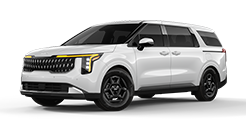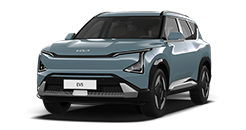open menu
- Home>
- Discover kia>
- ASK>
- Are self-driving cars the future?
Are self-driving cars the future?
“Self-driving cars will appear widely on our roads at some point. Self-driving cars can help drastically reduce car accidents as well as improve the quality of life for everyone. ”

A self-driving vehicle is a car or truck that can sense its environment and control its movements without human intervention. SAE, also known as the Society of Automotive Engineers has come up with 6 levels of self-driving vehicles. Technically, the levels range from 0 to 5. Here’s an explanation of the individual levels:
Level 0 means there’s no autonomy at all. With that type of vehicle, a human driver will be responsible for all driving tasks. Level 1 includes some driver assistance features such as lane keeping assistance or adaptive cruise control. But the car can do only one task at a time. Level 2 is partial automation. With this level of autonomy, the car can combine 2 or more automated tasks such as steering and accelerating at once. But even in those cases, the driver still remains primarily in control of the vehicle. Level 3 is conditional automation. At this level, the car is capable of driving from point A to point B without human intervention, but only in certain conditions. The driver still needs to be ready to take over at any time because the system will ask the human to intervene in critical situations. Level 4 is high automation. In level 4, the vehicle is considered fully autonomous in most driving conditions, but not all. Overall, the car will be able to drive itself and not ask for human intervention to complete the trip. But, the car would only operate in geo-fenced areas and won’t necessarily operate in certain weather conditions. Level 5 is full automation. The car can operate itself under all driving conditions. There may not be a steering wheel or brake pedal in the vehicle.
LIDAR functions in tandem with the GPS and computer vision and the car will interpret that data in real-time using their machine learning models. And the vehicle will also send that data to the cloud where the data can be processed off-line to improve the machine’s learning models of every car on the road.
To start off, self-driving cars can be a source of life-saving technology. Roughly 1.3 million people die in car accidents around the world each year. 90% of car accidents are caused by human error. Self-driving cars will eliminate the key source of human error as they will not make any errors of judgments. According to research, self-driving cars could save 29,447 lives annually by reducing traffic accidents.
In the self-driving future, not only will cars take many of our tasks for us, our communities will undergo an enormous re-design. The cars will just drop you off at the destination and go on to serve the next customer. Then, there will be no need for sprawling parking lots and underground parking garages. Imagine you can repurpose those current parking areas for green spaces such as parks.
In addition to changing the landscape of our cities, self-driving vehicles can provide unprecedented mobility so that many people with disabilities can enter the workforce. Transportation is key for people to get to work and interact with the public. With door-to-door transportation, autonomous cars can provide people with disabilities with basic freedom to come and go as they please.
There is no question that self-driving cars present many technological promises to our lives. But in order for us to truly take advantage and prepare for a future, we need everyone in the market to step up and put their heads together to pursue a solution.
















